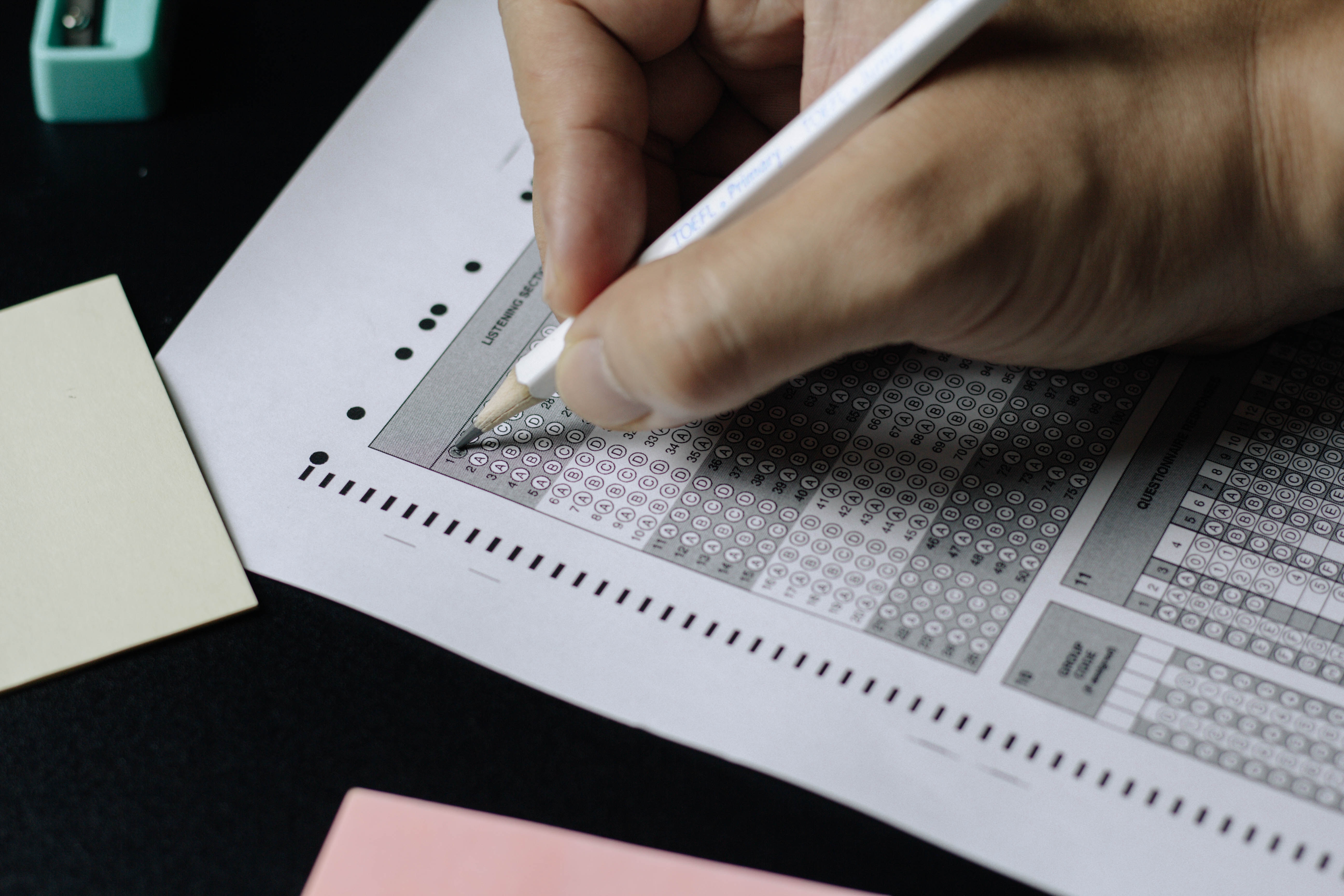
Concentric Circles: Thoughts and Feelings About Testing
Especially during testing time, it can be helpful to give students a chance to share their thoughts and feelings about testing. This activity draws from a lesson by Jinnie Spiegler.
Tell students that they’ll be doing an activity to explore their thoughts and feelings about high-stakes tests.
Assign half the students in the class the letter A and the other half the letter B. Have the A students form a circle in the center of the room. Have them turn outward.
Next, all the letter B students should face one of the A students in the circle so you have two concentric circles with students facing each other.
For each question below, students will have 2 minutes total (1 minute each) to respond. After each question, B students will move to the right or left so that they are facing a new partner. Use these questions and/or create questions of your own.
- What is your experience with "high-stakes" or standardized tests?
- Have you ever talked with anyone about high-stakes testing?
- How do you feel about high-stakes testing?
- Do you think we should continue having high-stakes tests? Why or why not?
- What are some alternatives to high-stakes testing?
Back in the large group, invite volunteers to share their responses to the questions. (They should not share their partner’s responses.)
If students are expressing high levels of stress over testing, consider the following activity for your class.
Exploring Test Stress – and How to Cope with It
This activity, excerpted from a lesson by Marieke van Woerkom, invites students to share their experiences of stress - and strategies for managing it. It uses a circle process. See our Introduction to Circles.
Explain that in today's circle, you'll be exploring personal experiences with high-stakes testing and the increased stress these tests sometimes cause.
Stress isn't necessarily bad. In small amounts, it can help motivate you. But when you're stressed too much, or stressed too much of the time, it can affect your mood, productivity, and even your health.
Read the following quote by Fiona Wood from Six Impossible Things out loud:
"Stress level: extreme. It's like she was a jar with the lid screwed on too tight, and inside the jar were pickles, angry pickles, and they were fermenting, and about to explode."
Send the talking piece around asking students to share a time they were stressed. What happened? How did the stress affect them?
Hand out index cards and markers. Ask students to:
- draw an outline of their bodies and with a color marker indicate where stress manifests itself in their bodies
- write on the index card the emotion that they associate with stress
Remind students that stress is a symptom, not a feeling. Though you may hear people saying they feel stressed, what they might actually be feeling is anxious, nervous, overwhelmed, depressed, angry, frustrated, or afraid.
Send the talking piece around once more, asking students to read out the emotion of how stress makes them feel. Ask them to contribute their index card to the center piece, before passing the talking piece to the person next to them.
How can we respond to stress?
Tell students that there are many strategies for managing or reducing stress on an individual level, beginning with something as simple as taking a few deep breaths.
We can also address stress by changing – or working to change – the underlying condition or problem that is causing the stress. Often just the act of working with others to address a problem relieves stress because we are taking an active rather than passive stance toward the problem. This also allows us to see how much we have in common with others, and gives us a chance to support each other, which reduces stress.
Ask students to think about how they might address the causes of their stress. Ask the questions below and record students' responses.
- What can we do as individuals to reduce any kind of stress? (Responses might include deep breathing, writing, drawing, exercise, getting enough sleep, eating well, getting support from friends...)
- What can we do to reduce stress before a test? (Prepare well, learn strategies for focusing and test-taking, seek extra help if we need it...)
If the class has expressed strong concerns about high-stakes testing in general, work with the group to come up with a plan to learn more about the problem and develop a strategy for addressing it.
Also see our SEL Tip on reducing stress at testing time, which offers strategies, from bringing plants into the classroom to mindful breathing, to help us and our students cope with the pressures of testing season.